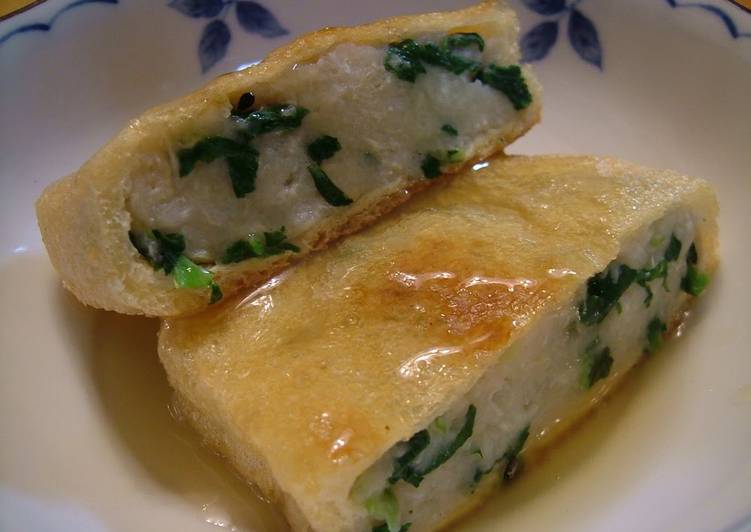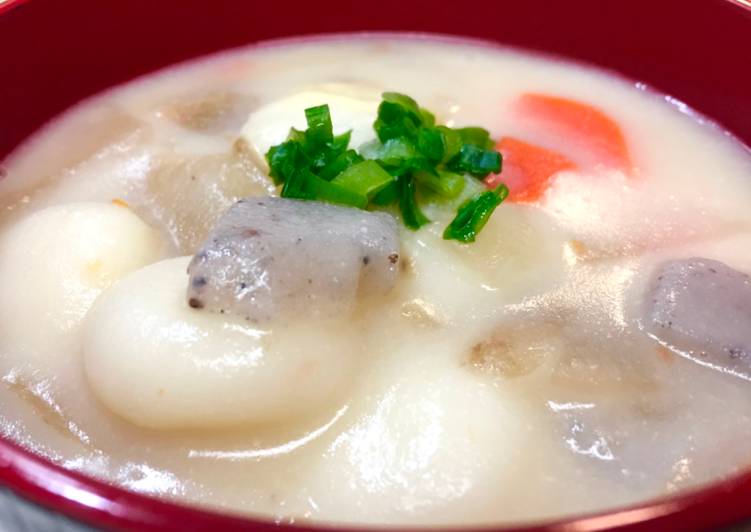
Hey everyone, it’s Brad, welcome to my recipe page. Today, we’re going to prepare a special dish, macrobiotic fried usu-age with taro potato. One of my favorites food recipes. For mine, I am going to make it a little bit tasty. This is gonna smell and look delicious.
Restaurant Style Fried Potatoes and Onions (With a Trick) Full Video Recipe. In this video, I will show you an easy trick to make golden, crispy potatoes. Nian gao (Chinese: 年糕, Chinese New Year cake) can be served in different ways, one of the popular ways is fried nian gao.
Macrobiotic Fried Usu-age with Taro Potato is one of the most well liked of recent trending foods on earth. It is easy, it is fast, it tastes delicious. It’s enjoyed by millions every day. They are fine and they look wonderful. Macrobiotic Fried Usu-age with Taro Potato is something which I have loved my whole life.
To begin with this recipe, we have to first prepare a few components. You can cook macrobiotic fried usu-age with taro potato using 6 ingredients and 5 steps. Here is how you cook that.
The ingredients needed to make Macrobiotic Fried Usu-age with Taro Potato:
- Take 10 slice Usuage (for inari sushi)
- Get 8 Satoimo (taro)
- Prepare 15 cm Green onions or scallions
- Get 1 Your choice of vegetables
- Take 1 tsp (A) Soy sauce
- Make ready 1/3 tsp A. Salt
How A Macrobiotic Diet Can Change Your Life. Lee Gross is most well known for helping to launch M Cafe , LA's premier macrobiotic eatery, and (maybe even more so) for being Gwyneth Paltrow's personal chef during her macro days. Today, he lends us a complete overview of what exactly. The ingredients are simple, and cooking is the key to producing meals that are nutritious, tasty, and attractive.
Instructions to make Macrobiotic Fried Usu-age with Taro Potato:
- Wash the taro potatoes clean, place in a pot, add enough water to cover them, and turn on the heat. Boil until the taro potatoes become soft, drain the water, and peel. (They will be hot, so be careful bit to burn yourself. It is good to do this while wrapping them in a clean cloth).
- Finely chop the scallions. Also prepare any other vegetables of your choice. I used minced daikon radish leaves this time.
- Mash the taro potatoes, and add in the "A" seasoning. Open up the usu-age, and pack in the potatoes.
- Cook the usu-age in a heated frying pan until golden brown. (You generally don't need to use oil).
- Cut into desired sizes. I love to eat this topped with Japanese-style an sauce, but it also tastes really good with ginger and soy sauce. Enjoy it with whatever you like.
Oil should be used in moderation for fried rice, fried noodles, and sauteing vegetables. Generally two to three times a week is reasonable. Taro, one of the most popular purple starches, is not particularly purple in hue; the "corm" bulb used most often in taro cooking looks almost like a coconut steamed in chunks with pork shoulder or fatty Chinese sausages in fried rice flour cakes found on dim sum tables. Sometimes it's served in a hot. Is the Macrobiotic Diet an effective weight loss plan?
So that’s going to wrap it up for this special food macrobiotic fried usu-age with taro potato recipe. Thanks so much for your time. I am sure that you will make this at home. There’s gonna be more interesting food at home recipes coming up. Remember to bookmark this page on your browser, and share it to your loved ones, colleague and friends. Thanks again for reading. Go on get cooking!


